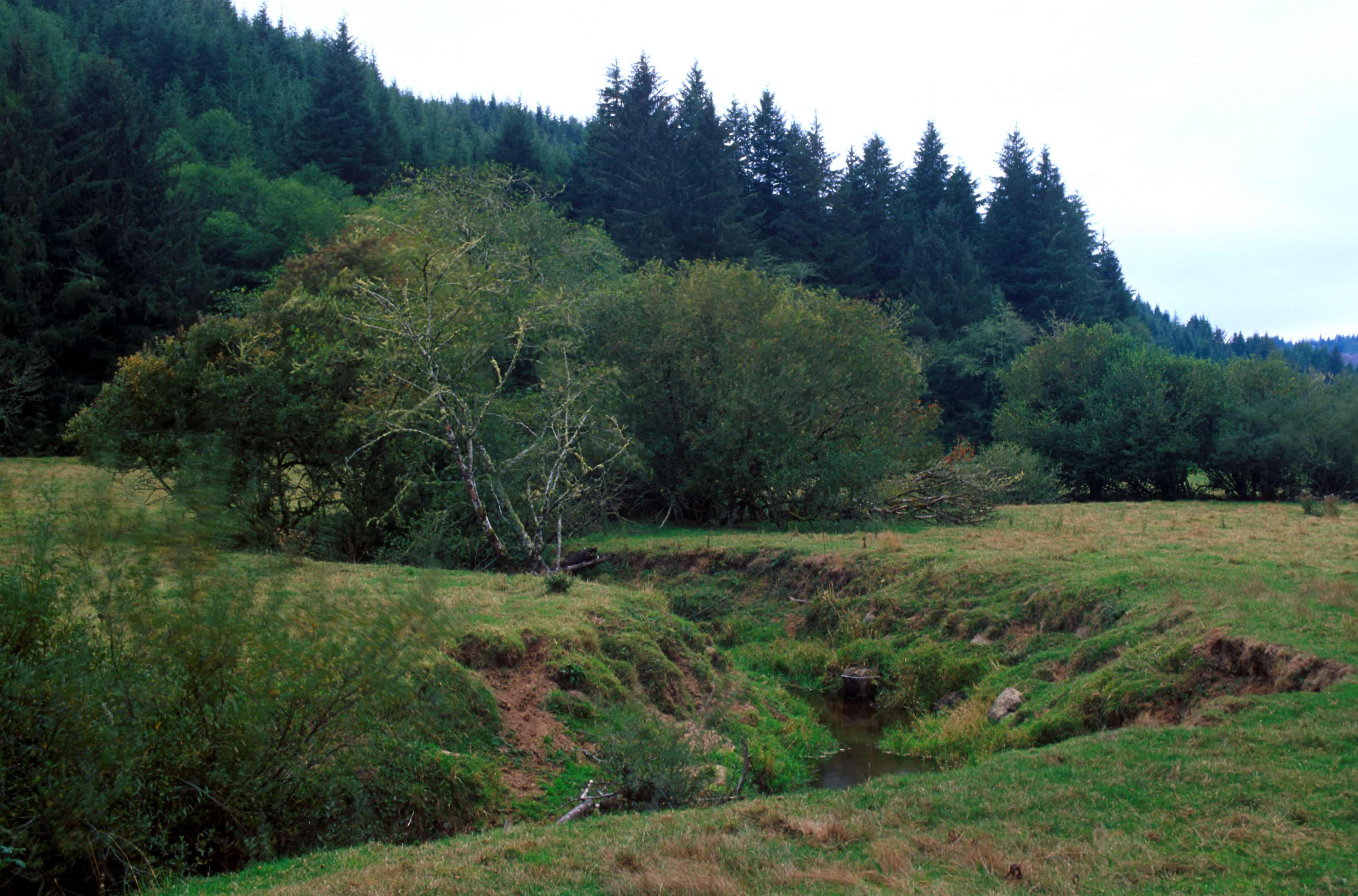A River Transformed

One of my responsibilities as Western Rivers Conservancy’s Stewardship Director is to visit past projects to assess how they’re holding up as a conservation project. This October, I had the opportunity to visit Fivemile and Bell Creeks, where one of WRC’s accomplishments has come full circle.
|
|
| After restoration: Fivemile Creek in 2018, with the floodplain connectivity restored allowing for water to spread across the valley floor during all but the driest times of year, and native grasses, shrubs and tree seedlings planted throughout. |
The Backstory
In 2002, WRC purchased 640 acres along Fivemile and Bell Creeks, including the confluence of the two streams. Located within Oregon’s Siuslaw National Forest, Fivemile Creek eventually flows into Tahkenitch Lake on the Oregon coast, just north of Reedsport.
When WRC bought the property, Fivemile Creek was in pretty rough shape. Around 1850, homesteaders settled in the valley and, as was customary at that time, began the process of converting the valley for agricultural production. Fivemile Creek was moved to the side of the valley. Its meanders were straightened, wetlands were drained for pasture and crop production, non-native grasses were introduced, and before long, the valley was completely transformed from its original state. These practices, while great for agriculture, have been detrimental to many of the native species that call Fivemile and Bell creeks home. Despite this, these streams remained relatively good spawning and rearing ground for coho salmon and steelhead. When WRC purchased this stretch of Fivemile Creek, it was estimated there were over 100 spawners per mile.
Transfer to the Forest Service
Recognizing this resource value and seeing opportunity for future restoration, WRC worked with the Siuslaw National Forest to conserve the property. In 2003, we conveyed it to the Forest Service using an appropriation from the Land and Water Conservation Fund.
Siuslaw staff hit the ground running and began removing invasive species and working with the local community to discuss how to restore the property. As this work went on, Fivemile Bell rose to national prominence, becoming one of two pilot projects selected by the Center for Environmental Quality to streamline restoration activities on public land.
In 2012, the on-the-ground work of putting Fivemile Creek back together began in earnest. Restoring a river to its natural state, even one as small as Fivemile Creek, is a lengthy, complex and expensive process. To keep the project moving forward, the Fivemile Creek restoration team developed a multi-step approach starting with Phase I at the eastern end of the property and moving upstream to Phase IV, which was completed in 2018.
Fivemile Creek Today
To date the Siuslaw National Forest has restored 97 acres of the Fivemile Creek valley at an estimated cost of $30,000 per acre. Much of the funding came from the Oregon Watershed Enhance Board, with technical expertise, labor and local contractors provided by the Siuslaw Watershed Council and The Siuslaw Institute, making this a truly collaborative project.
To say that the transformation has been monumental is an understatement. There is one more phase to complete, but it is apparent that what once was an incised creek with eroding banks has been returned to a diverse stream system with wetlands, multiple channels, deep pools and lush riparian stands. Willows and alder planted on Phase I are now well above 10 feet high. Even Phase III, which was completed in 2017, has lush vegetation and waist high willows already beginning to shade the open water and filter sedimentation. Most importantly, water covers nearly the entire valley floor during the winter months, providing unfettered access to spawning grounds further upstream, and offering vastly improved rearing habitat for coho and steelhead as they make their way back to the Tahkenitch Lake and eventually the ocean.
Fivemile Creek required an intensive and sustained restoration effort with multiple partners to achieve these remarkable results. WRC focuses on projects with strong resource values, which means that the habitat is either functioning very well or is highly restorable. The Fivemile project is representative of WRC’s ability to recognize outstanding resources values and pick excellent partners to be the long term stewards of the properties we buy. As Stewardship Director, it is incredibly gratifying to see such a successful conclusion to something that began over 15 years ago and share that experience with our partners and supporters.

